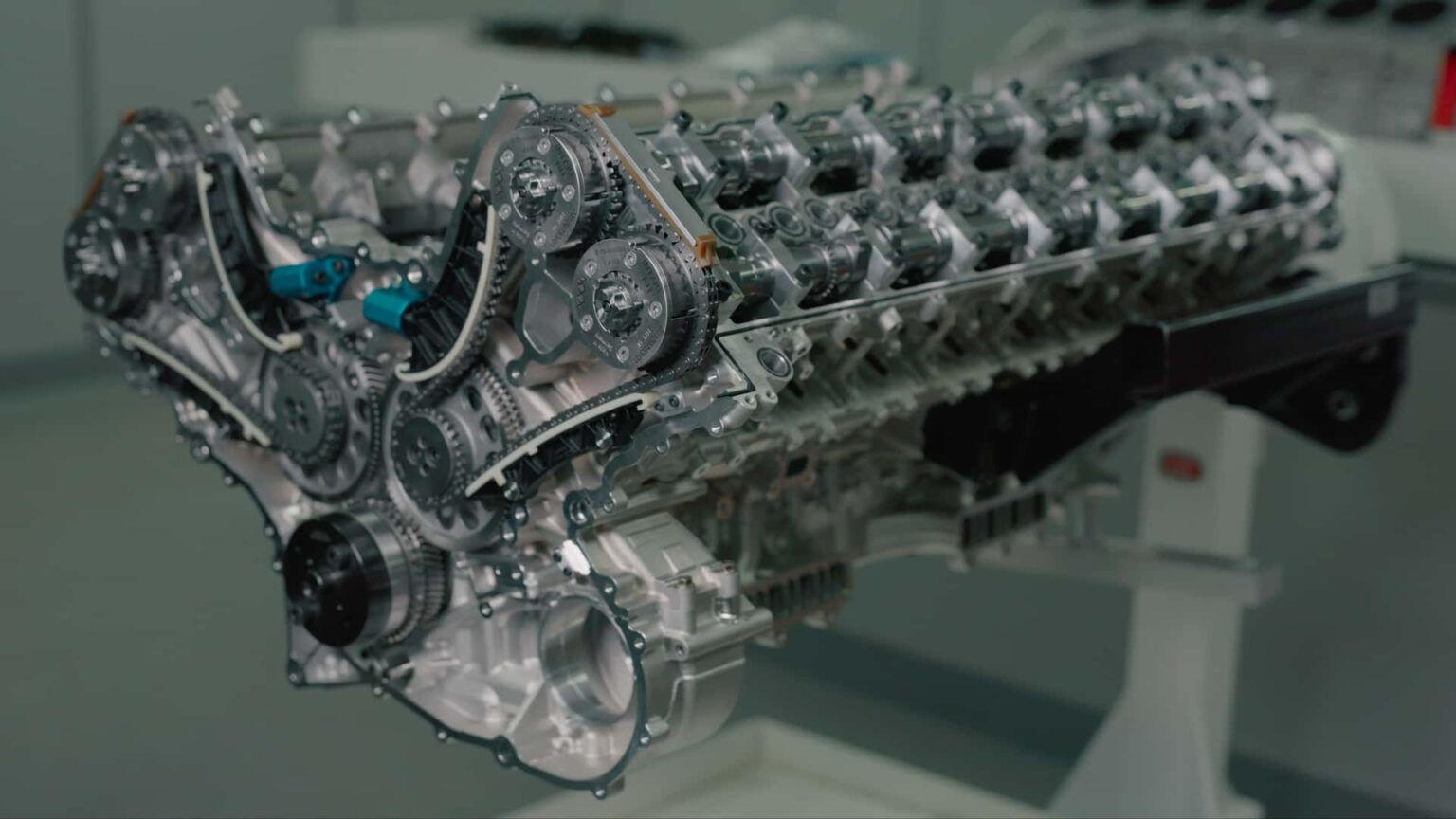Bugatti just released a video and accompanying photos of the Tourbillon’s amazing, Cosworth-built, naturally aspirated V-16, and obviously, we’re poring over all of it. What jumped out at us is the V-16’s unique timing system. It’s unlike anything we’ve ever seen in an automotive engine.
The photo of the front of the engine has a lot of details artfully obscured, but the timing mechanism jumps out. It’s a combination of chain and gear drive, with a gear for each cylinder bank meshed together, and meshed with a gear at the end of the crankshaft. The two gears meshed to the crankshaft gear have their own smaller gear for a timing chain, which drives the camshafts.
So you’ve got two timing chains, one for each half of the engine.
Photo by: Bugatti
We reached out to both Bugatti and Cosworth to learn a bit more about why they’ve employed this system, because otherwise, we can only speculate. My best educated guess is that having two chains must be a way to combat the extreme vibration and forces a 16-cylinder engine generates, but this is very much a guess, so take it with a big grain of salt. Or maybe there’s just a useful simplicity and/or friction reduction benefit by having two timing chains.
Photo by: Dean Smith / Motor1
The gear drive system of the Cosworth GMA V-12, as a point of comparison.
Racing engines are fully gear driven, which ensures maximum reliability and high-revving performance, but it’s a much more complicated setup, and a noisy one too. Cosworth’s V-12s for Aston Martin and Gordon Murray Automotive are both gear driven, but perhaps Bugatti didn’t want the associated noise for its V-16. It does, however, appear that the oil pump is gear driven, though.
Another detail that stands out are the vibration damper, which is surely necessary because the crankshaft for the Tourbillon is over 3 feet long. The camshaft variators—which change the valve timing—are interesting, too. For starters, they appear to be the same part used in the Audi S4’s 3.0-liter V-6, though the VW AG marking on them has been crossed out. The numbers on the variators don’t correspond to any existing part, but both the units on the Bugatti and the VW/Audi part have HYT DE and “Made In Germany” embossments.
Also of note, the two in-focus variators are both labeled “Intake RH.” We doubt Cosworth made a mistake here, but instead, this must be a way to obscure some of the engine’s secrets while still giving us cool pictures. So it’s not worth going down the rabbit hole completely.
Photo by: Bugatti
The camshafts have just one profile per valve, so it appears this engine only uses variable valve timing, not lift. Since the Tourbillon has a hybrid system that can provide instant, low-end punch, we suspect variable lift is an unnecessary complexity: Just tune the engine for high-rpm performance and let the hybrid system take care of any torque gaps. And is it just us, or do those valve stems look tiny?
In Bugatti’s photos, there’s a neat look at a three-cylinder test mule on the Cosworth dyno. Cosworth always builds a three-cylinder mule to test the fundamentals of an engine before building full-sized prototypes. In dyno shots of the V-16, we get a good look at the gorgeous carbon-fiber intake plenum, with its four throttle bodies that appear to be generic Bosch units, though any part numbers are out of focus.
The video is cool, especially because we get to hear the V-16 on the dyno as it rips to its 9,500 rpm redline like it’s a NASCAR Cup car. It’s an engine unlike anything else, and not simply because of its impressive cylinder count.
10
Read the full article here


